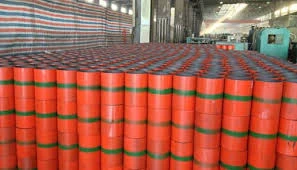- Afrikaans
- Albanian
- Amharic
- Arabic
- Armenian
- Azerbaijani
- Basque
- Belarusian
- Bengali
- Bosnian
- Bulgarian
- Catalan
- Cebuano
- Corsican
- Croatian
- Czech
- Danish
- Dutch
- English
- Esperanto
- Estonian
- Finnish
- French
- Frisian
- Galician
- Georgian
- German
- Greek
- Gujarati
- Haitian Creole
- hausa
- hawaiian
- Hebrew
- Hindi
- Miao
- Hungarian
- Icelandic
- igbo
- Indonesian
- irish
- Italian
- Japanese
- Javanese
- Kannada
- kazakh
- Khmer
- Rwandese
- Korean
- Kurdish
- Kyrgyz
- Lao
- Latin
- Latvian
- Lithuanian
- Luxembourgish
- Macedonian
- Malgashi
- Malay
- Malayalam
- Maltese
- Maori
- Marathi
- Mongolian
- Myanmar
- Nepali
- Norwegian
- Norwegian
- Occitan
- Pashto
- Persian
- Polish
- Portuguese
- Punjabi
- Romanian
- Russian
- Samoan
- Scottish Gaelic
- Serbian
- Sesotho
- Shona
- Sindhi
- Sinhala
- Slovak
- Slovenian
- Somali
- Spanish
- Sundanese
- Swahili
- Swedish
- Tagalog
- Tajik
- Tamil
- Tatar
- Telugu
- Thai
- Turkish
- Turkmen
- Ukrainian
- Urdu
- Uighur
- Uzbek
- Vietnamese
- Welsh
- Bantu
- Yiddish
- Yoruba
- Zulu
Examining the Role of Petroleum Tubing Couplings in Oil and Gas Production Systems
Understanding Petroleum Tubing Coupling A Vital Component in Oil and Gas Operations
In the dynamic world of petroleum extraction, efficient and reliable equipment is paramount. One such critical component that plays a significant role in the oil and gas industry is the petroleum tubing coupling. This essential fitting facilitates the connection and disconnection of various tubing sections within a wellbore, ensuring the safe and effective transportation of hydrocarbons from underground reservoirs to the surface.
What is Petroleum Tubing Coupling?
A petroleum tubing coupling is a mechanical device designed to connect two lengths of tubing, typically used in oil and gas wells. These couplings are manufactured to withstand high pressures and harsh conditions prevalent in subsurface environments. The coupling allows for the secure joining of sections of tubing, enabling drilling and production operations to continue smoothly. Couplings can be classified into several types based on their design and intended use, including threaded couplings, weld-on couplings, and compression couplings.
The Importance of Quality Couplings
The integrity of a well system heavily relies on the quality of the tubing couplings employed. Couplings must be made from durable materials that can resist corrosion, heat, and pressure. Common materials used include carbon steel, stainless steel, and various alloys specifically engineered for high-stress environments. The failure of a coupling could lead to catastrophic consequences, including leaks, blowouts, and environmental contamination, underscoring the necessity for high-quality components in petroleum operations.
Types of Petroleum Tubing Couplings
1. Threaded Couplings These are one of the most common types of couplings in the industry. They feature male and female threads that allow two tubing sections to be screwed together, providing a robust connection.
petroleum tubing coupling

2. Weld-on Couplings As the name suggests, these connections involve welding two pieces of tubing together. This method offers a strong, permanent joint, particularly useful in applications where the tubing will not need to be disassembled.
3. Compression Couplings These couplings use mechanical compression to secure the joint. They are typically easier to install and can be constructed from various materials, enhancing their versatility in different operational contexts.
Application of Tubing Couplings in Drilling and Production
During the drilling process, multiple sections of tubing are often connected to reach the desired depth. Tubing couplings allow for these connections while maintaining the necessary pressure integrity and preventing the ingress of fluids. In production, as hydrocarbons are extracted, the couplings facilitate efficient flow by handling the considerable pressures encountered.
Moreover, in subsea operations, special couplings are designed to withstand extreme environmental conditions. They are built to handle both temperature and pressure fluctuations synonymous with underwater drilling.
Maintenance and Inspection of Couplings
Regular maintenance and inspection of petroleum tubing couplings are essential to prevent failures. Routine checks can include examining for signs of wear, corrosion, and stress fractures. Employing non-destructive testing methods can further enhance the reliability of these connections, ensuring safe operations.
In conclusion, petroleum tubing couplings are pivotal components in the oil and gas industry, contributing to the efficacy and safety of drilling and production operations. Their ability to connect different tubing sections under extreme conditions makes them indispensable. With a focus on quality materials and regular maintenance, operators can ensure the reliability of these connections, minimizing the risks associated with hydrocarbon extraction and contributing to sustainable energy production. Understanding the nuances of various coupling types and their functionalities allows for better decision-making and investment in the right equipment, ultimately leading to more efficient industry practices.
-
Tubing Pup Joints: Essential Components for Oil and Gas OperationsNewsJul.10,2025
-
Pup Joints: Essential Components for Reliable Drilling OperationsNewsJul.10,2025
-
Pipe Couplings: Connecting Your World EfficientlyNewsJul.10,2025
-
Mastering Oilfield Operations with Quality Tubing and CasingNewsJul.10,2025
-
High-Quality Casing Couplings for Every NeedNewsJul.10,2025
-
Boost Your Drilling Efficiency with Premium Crossover Tools & Seating NipplesNewsJul.10,2025







